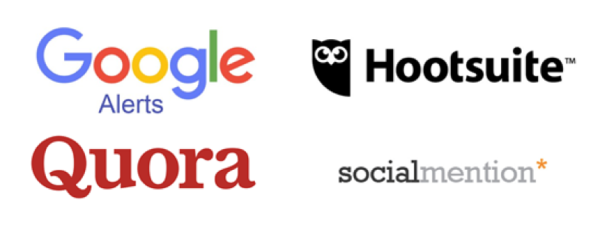More than 80 percent of Americans have a social media account, and nearly half have interacted with companies or institutions on at least one of their social media networks. For 41 percent of them, it’s important that the brands they engage with have a strong social presence; for 59 percent, social media has actually been a big help in getting their complaints resolved.
As you can see, social media has evolved beyond simply being a place where you can talk to your friends and family. Today, social media is a place to interact with your favorite brands, talk about the experiences you’ve gone through, and give praise to those who have earned it. In other words, it’s a place to talk so others can listen.
The thing about talking on social media is that people sometimes just want to vent with little to no repercussions for doing so. For example, if they have a bad experience at the drive-through of their favorite fast food place, they may simply want to complain about it to their followers, and not actually complain to the brand about the incident. In fact, about 30 percent of Tweets that mention a brand don’t actually include the brand’s handle.
As digital marketing expert, Neil Patel, says, “not everyone who has a problem with you will say it right to your face.”
This is not a bad thing—not at all. People should be able to vent at will, especially if they’ve been wronged. The problem comes when you realize that instances like this lead to gaps between the conversation that should always be taking place between you and your audience; you should always know what your audience is thinking about in respect to your brand. So, how can you do that? How can you always know not only what is being said about you, but also about things that pertain to you as a whole, such as your competitors and industry trends?
That’s where social listening comes in.
What a social listening strategy can do
With the right tools, social listening lets you know exactly what is going on with everything surrounding your brand so you can make the most of changing trends and sentiments. Before we continue on our discussion, let’s take a little detour and cover a common misconception about the relationship between social listening and social media monitoring.
Even though many use both terms interchangeably, the latter refers to paying attention to what is specifically said about your brand and the keywords you’re monitoring, and the former involves taking a step back to see a bigger picture of everything and how it all comes together. In essence, while social media monitoring allows you to take immediate action, social listening empowers you to develop a more encompassing strategy that can further your goals. When combined, they form a well-rounded strategy that can be used for anything (e.g. a local business social media strategy.
With that in mind, let’s go back to social listening. Because people spend so much time on social media, it’s a treasure trove of information that can be used to meet new clients and influencers, create memorable customer experiences, and tailor strategies to improve your business. For instance, because people usually mention your brand name in a Tweet when they want to get your attention, it usually presents an opportunity to help your users who may have a problem. And if a lot of people seem to be talking about a particular trend, it usually means that it’s about to blow up and you should start taking note of how to incorporate it into your own strategy.
How to “do” social listening
Social listening is a key component of audience research and your strategy as a whole that allows you to track conversations that are happening around your brand so you can gain valuable insights from them. Because your brand should be your number one priority, social listening starts with social media monitoring so you can track everything people are saying about your business. Likewise, you should check up on your competitors, the products you’re selling, and any specific keywords you want to keep track of. Afterward, it’s time to look through a macro lense and delve into topics and conversations that may not explicitly mention your brand, its competitors or products.
For example, let’s use a simplified analogy in which you’re part of a digital marketing agency to illustrate what this entails. In this case, you would track what different content management systems like WordPress and Drupal are doing and what their users are saying. For instance, WordPress recently released WordPress 5.0, which included the introduction of a new block editor. If you simply knew about the update but weren’t tracking any conversations around it, you may be inclined to recommend it to your clients because it includes security patches and cool new features. If, on the other hand, you were listening, you would know that A LOT of people are not happy with it, and are reverting to the Classic editor until bugs and issues are resolved.
As you can see, social listening enables you to look beyond your brand and into things that impact it, albeit indirectly. With this in mind, the next step is to aggregate the information you’ve compiled, analyze it, then put what you’ve learned into action. This can take many forms and include a wide variety of things, as there’s a lot you can learn and even more you can do. The same goes for the end-results; they can be anything from a single happy customer to a complete brand repositioning.
Tools to Uphold Your Social Listening Objectives
With some knowledge of what you can accomplish with social listening, the next step is to cover some tools to make everything easier:
Google Alerts is a powerful tool provided by Google that allows you to track anything you’d like, your company’s name, competitors’ mentions, or trending topics. Once you’ve decided on a keyword to track, you can set up email alerts and even use advanced operators in the search box for better results.
Hootsuite is an all-in-one social media tool that lets you monitor social media mentions in real time, allowing you to respond to customers right away.
Quora is essentially a question and answer (Q&A) website where you can track what people are asking and saying about any particular topic. For example, you can ask questions like “What’s trending in the industry?” and see what most people are saying, or choose to sit by the sidelines and track what they’re saying about specific things with updates to your Quora feed.
{Social Mention}(http://www.socialmention.com/) is a social media tracking tool that “aggregates user-generated content from across the universe into a single stream of information.” As such, you can easily track any topic from channels like Twitter, Facebook, YouTube, Google, etc., and measure what people are saying about it in real-time. For more refined results, you can also use advanced filtering options like geo-location and language.

For more tools, check out this post from Hootsuite, which includes 16 of the best social media monitoring tools that can also be used for social listening.
Social listening examples: Big brands that use social listening
Now that you have a good idea of what social listening is and how you can make the most of it with varying tools, it’s time to cover some big brand social listening examples to see it in action. For the first, look no further than McDonald’s.
Back in 2017, an episode of the cartoon Rick and Morty featured a storyline surrounding McDonald’s famous Szechuan sauce, which was originally created as a tie-in for Disney’s Mulan back in the late 1990s.

Long story short, A LOT of people started talking about Szechuan sauce online, McDonald’s listened, saw an opportunity unfolding, and decided to revive and distribute a limited supply to a few locations. Not only did people show up in troves to buy Chicken McNuggets paired with the much sought-after sauce, but some even rioted when supplies ran out.
For the second social listening case study, we’re going to look at a couple of brands, as it relates to a variety of TV networks.
Even though some soap operas have lasted decades, an inevitability of TV is that a show cannot last forever. And while shows sometimes end on a perfect note, there are other occasions in which they’re canceled prematurely and fans are left devastated. About 20 years ago, there wasn’t a lot that these fans could do in such situations.
Things are different today thanks to social media and the ability to group en masse and create campaigns and petitions to bring back these canceled shows.
For example, Lucifer was saved by Netflix after Fox canceled it; The Expanse was saved by Amazon after SyFy canceled it, and Brooklyn Nine-Nine was saved by NBC after Fox canceled it. In all of these instances that happened last year (2018), fans of these shows tweeted and commented their disappointment so many times that networks decided to pick up what their rivals had dropped off. Not only were the shows allowed to keep going, but they also saw a fan following revival that translates to more viewers for these networks.
Final thoughts
Social listening involves tracking conversations about your brand and topics that are related to it so you can leverage any insights gained to discover new opportunities to improve your business. As such, social listening goes beyond social media monitoring and expands to include everything that can have any sort of impact on your brand. It’s a valuable tactic that many know of, but not as many try (much less actually incorporate into their strategies). Don’t let that happen. Internalize what you’ve learned today and start listening!
*This blog post was written by Matthew Fritschle, a content writer for Aumcore, a digital marketing agency in NYC that specializes in all things digital. He writes on a variety of subjects that range from social media] marketing to emerging technological trends.*


